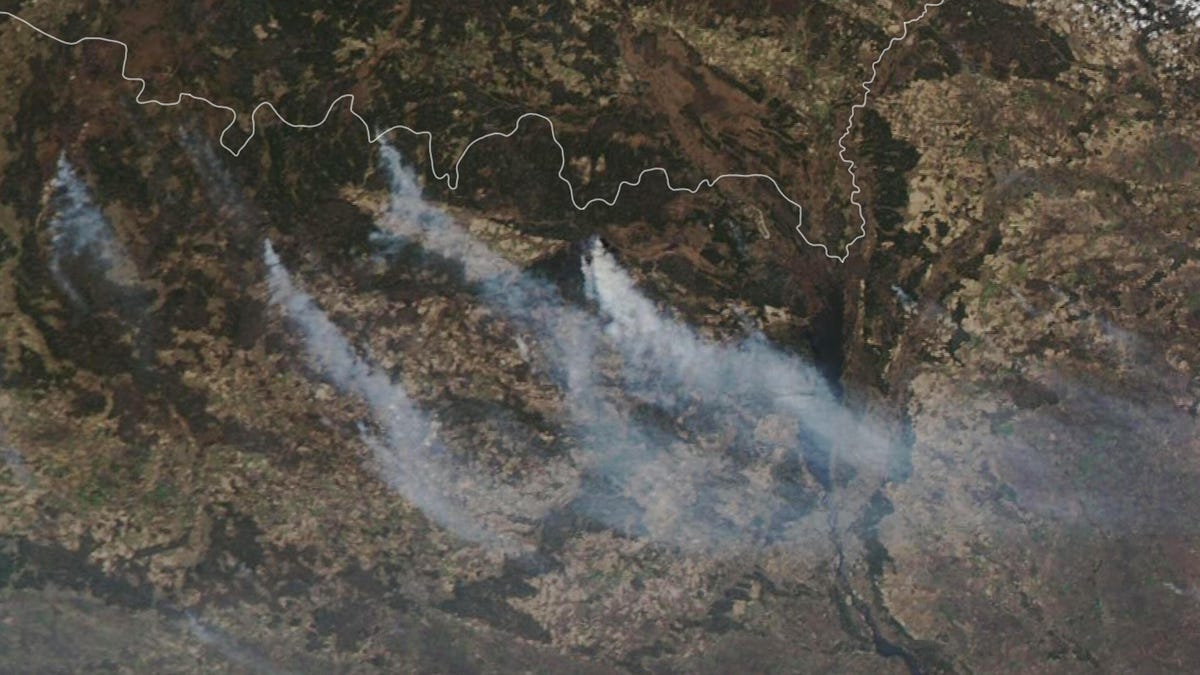NASA satellite views of Chernobyl wildfires paint worrisome picture
Scientists have already raised concerns about the potential spread of radiation through smoke plumes.
Forest fires have been burning near the site of the Chernobyl nuclear disaster since early April. NASA's satellite eyes in space have been tracking the smoke plumes from the wildfires in the Ukraine. The images paint a worrisome picture.
The 1,000-square-mile (2,600-square-kilometer) Chernobyl Exclusion Zone surrounds the nuclear power plant to restrict access to areas contaminated with radiation from the 1986 disaster. NASA's Aqua satellite captured views of this region on April 8 and April 9 that show active fires and long swaths of smoke.
This annotated version of a NASA Aqua satellite image from April 8, 2020 shows the locations of the fires and Chernobyl.
"Fires in the exclusion zone are not uncommon, but the severity and intensity of the fires has grown over the years as more forests and grasslands have recovered," said NASA's Earth Observatory in a release on Friday.
NASA also shared an annotated version of one of the satellite images that shows the recent fires in respect to Chernobyl and the border with Belarus.
Wildfires are bad enough, but the location of these fires make them particularly concerning. A study on exclusion-zone fires that occurred in 2015 found that smoke plumes can carry radioactive particles far beyond the zone's boundaries.
Extreme wildfires have become a global phenomenon after destructive blazes burned through the US, Australia, the Amazon rainforest and even the Arctic over the past year.
Firefighters are working to stem the Chernobyl fires.


